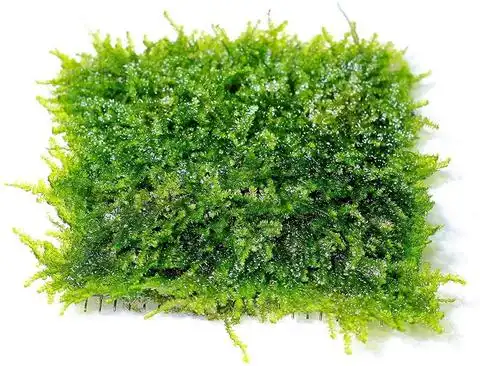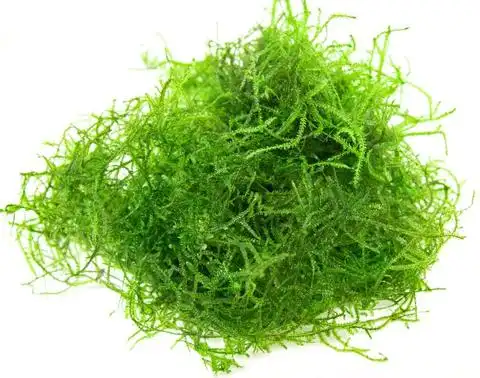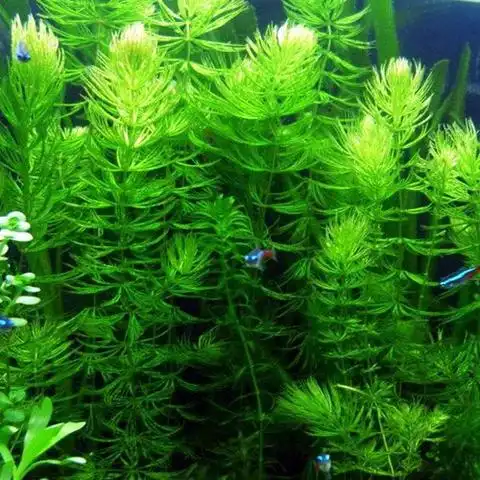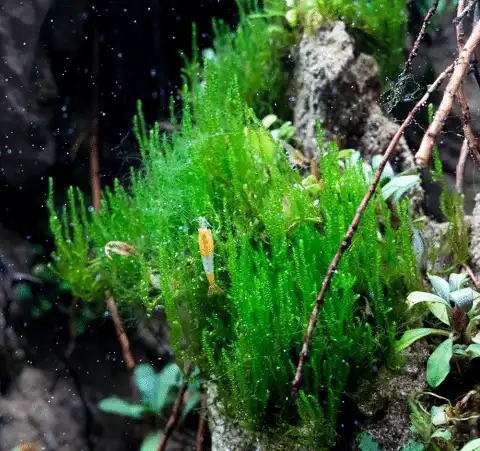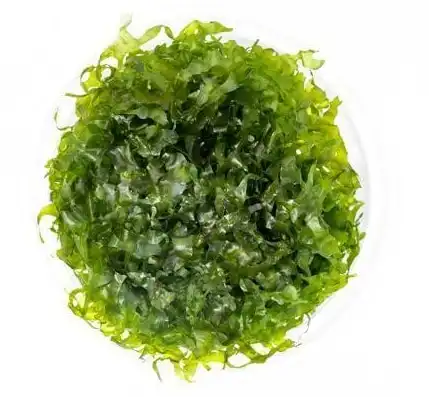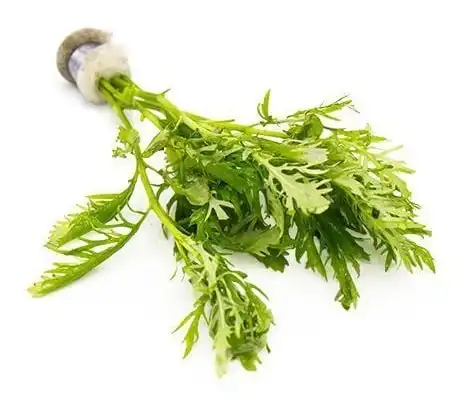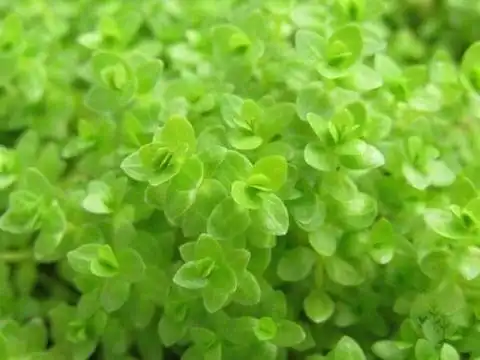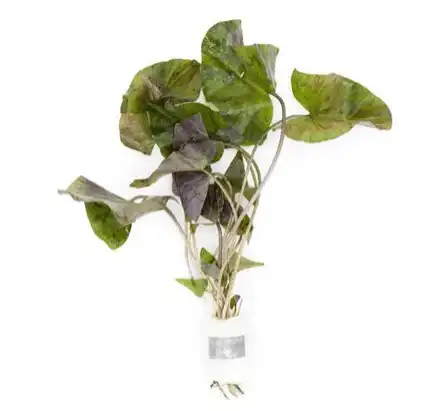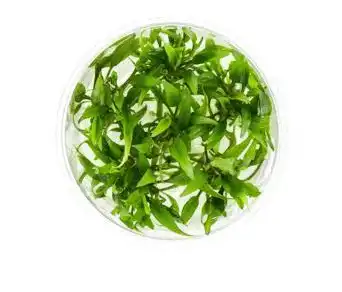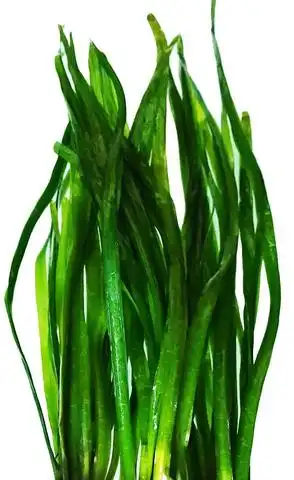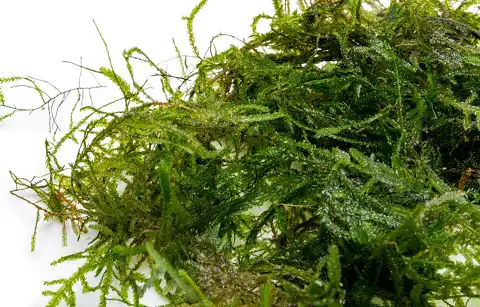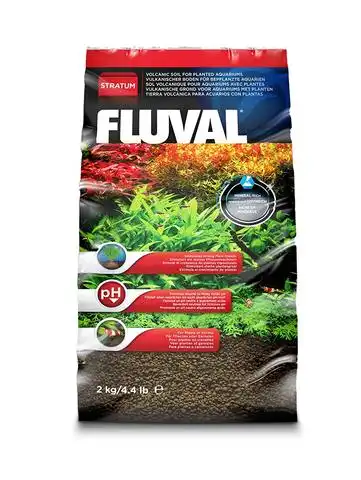Thank you for visiting! By the way… any links on this page that lead to products on Amazon and other stores/partners are affiliate links Aquarium Store Depot earns a commission if you make a purchase.
Are you struggling with finding a plant for your shrimp that doesn’t die right away?
In this blog, I share the best plants for shrimp tanks, from mosses to floating plants.
With over 25 years of experience in the aquarium hobby, I’ve assisted countless clients, hobbyists, and readers like you in overcoming their plant choice dilemmas (and believe me, there are a ton of plants you can buy today). I’ve personally tested these plants in real world scenarios to determine the best plants for shrimp tanks.
Key Takeaways
- Freshwater shrimp are compatible with a large number of plants
- Low maintenance plants are best suited for shrimp tanks as most tanks are not heavily filtered
- Look for plants that provide nutrient uptake, like Hornwort to make up for filtration needs
- Various plants offer different pluses to shrimp. Some are great for breeding, while others are great for hiding
- When it comes to fertilizing your plants, use a shrimp safe fertilizer and shrimp safe substrate1
The Top Picks
For those of you in a hurry, here are the top three plants I would recommend if you were keeping a shrimp tank. If my goal is breeding, my go to plant is going to be Christmas moss. This plant is well know as a staple in many breeding setups. If you want something that is reliable and easy to find everywhere, Java moss is going to be your best choice. If you want to control nutrients, Hornwort is definitely up to the tasks. Any of these three plants work amazing in shrimp setups.
The 15 Best Plants For Shrimp Tanks
Here are 15 of my favorite aquarium plants for your shrimp tank.
We have a video above just for you all about the topic from our YouTube channel. Our blog post goes into further detail below as well. Please subscribe if you enjoy our content, as we post new videos every week!
1. Christmas Moss
A easy to care ground cover plant that is an excellent choice for shrimp tanks
- Scientific Name: Vesicularia montagnei
- Common Name: Xmas Moss
- Origin: Tropical Asia
- Skill Level: Easy
- Lighting: Low to Medium
- Growth rate: Medium to slow-growing plants
- pH: 6-8
- CO2 Requirement: Not necessary but recommended
Christmas Moss or Xmas moss is one of the most popular freshwater aquarium plants that are attractive, easy to care for, and overall an excellent addition to your shrimp tank.
The beautiful distinctive feathery branching appearance of your Christmas Moss resembles a Christmas tree. Hence, it is commonly called Xmas Moss. However, I chose this plant for your shrimp tank because it is shrimp-friendly. Xmas Moss provides a great habitat for your shrimp to forage and hides in its dense foliage, allowing your shrimps to live stress-free in your aquarium. Ideally, the dense foliage helps your young shrimp to find hide and find shelter from potential predators.
Nonetheless, it keeps your tank well-oxygenated and clean by converting carbon dioxide into Oxygen, ultimately improving water quality and providing a healthier ecosystem for your shrimps.
Lighting requirements for Christmas Moss
Ask anyone you like about the lighting requirements for Christmas Moss and you’ll receive mixed answers. Sure, Christmas Moss is an easygoing and hardy plant with great adaptability, but it still has some requirements.
These aquatic plants can handle low light conditions. However, it is not sufficient for the growth of plants. Hence, Christmas moss thrives in high to moderate lighting with heavy branching and a compact growth rate.
Additionally, this plant grows exceptionally well when exposed to a photoperiod of 8 to 10 hours daily, mimicking the natural environment and ensuring the moss receives abundant light for photosynthesis.
2. Java Moss
One of the easiest mosses to grow in an aquarium. Great for small fish and shrimp
- Scientific Name: Vesicularia Dubyana
- Common Name: Java Moss
- Origin: Southeast Asia
- Skill Level: Easy
- Lighting: Low to medium
- Growth rate: Slow
- pH: 6-8
- CO2 Requirement: Not necessary but recommended
Out of all the mosses, my favorite freshwater aquarium plant for tanks is Java moss. That’s because it’s easy to keep and care for beginners. Also, Java moss is an ideal aquarium plant for your shrimp, especially if you have young shrimp that need hiding places.
Overall, it is one of the most beautiful aquatic plants that is suitable for smaller tanks as well. Just try maintaining a temperature range of around 59 and 86°F and always attach it to rocks or driftwood.
Lighting requirements for Java Moss
Java moss is an easy plant with low light requirements. Surprisingly, Java moss can survive very light conditions and yield different results. For example, if you keep it in low light, it will grow lankier. In bright lighting, the growth is denser which favors your shrimp tank. However, under high lighting, Java moss may grow algae on it, which your shrimp loves.
Therefore, it is a versatile plant that is excellent for every shrimp tank.
3. Flame Moss
Flame moss is a creeping plant that does well in shrimp tanks. An easy to grow plant that is slow growing and low maintenance
- Scientific Name: Taxiphyllum ‘Flame’
- Common Name: Flame moss
- Origin: South East Asia
- Skill Level: Easy
- Lighting: Low light to medium light
- Growth rate: Slow-growing plants
- pH: 6-8
- CO2 Requirement: Not necessary but recommended
Flame moss is a beautiful aquarium plant, ideal for shrimp tanks. It is best known for its fiery flame-like appearance that brings an aesthetic appeal to your shrimp tanks.
Flame moss is a creeping plant that brings many benefits to your shrimp tank. Firstly, it’s a low-maintenance and easy-to-keep plant that thrives in a wide range of water parameters with no additional lighting or carbon dioxide requirements.
Besides, it provides hiding spots for young shrimps and other small fish, ultimately reducing stress in the aquarium.
What I love the most about Flame moss is its versatile attachment to various surfaces, including rocks, driftwood, and mesh to enhance the creative designs and overall layouts in the aquarium.
Lighting requirements for Flame moss
Like Java moss, flame moss does not need any strong lighting to photosynthesize. It does really well in low to moderate lighting for around 8 hours a day. Avoid too much light or direct sunlight to prevent drying out or sunburn.
4. Mini Weeping Moss
Wepping moss is a great choice for shrimp tanks. They grow dense, easy to grow, and have slower growth rates. A hardy and shrimp friendly plant
- Scientific Name: Vesicularia ferriei
- Common Name: Java Spring, Weeping Moss,
- Origin: China
- Skill Level: Easy
- Lighting: Medium
- Growth rate: Slow-growing plants
- pH: 5-6
- CO2 Requirement: Not necessary but recommended
If you have a nano shrimp tank, weeping moss is an excellent choice for your aquarium with its dense vegetation that provides great hiding spots for your shrimps. Like other plants, Weeping moss also improves and maintains the quality of water while supplying enough oxygen for your shrimp to survive. It also supports the growth of shrimps in a nano tank.
Even though Carbon dioxide is not necessary for the proper growth of this moss, it’s recommended to help the plant grow faster. All in all, weeping moss is one of the amazing beginner-friendly plants for your shrimp tanks that can survive extreme water conditions and still thrive.
Lighting requirements for mini weeping moss
The lighting for weeping moss should be moderate to high because it needs enough light to grow and thrive. I suggest getting modern LED planted aquarium lights to enhance the growth of the plant.
Along with proper lighting, quality water conditions, carbon dioxide level, food, and diet should be maintained with proper water changes to help the plant grow faster.
5. Subwassertang
A floating plant that is great for shrimp tanks.
- Scientific Name: Lomariopsis Lineata
- Common Name: Süsswassertang, Loma Fern, Round Pellia
- Origin: South East Asia
- Skill Level: Easy
- Lighting: Low to medium
- Growth rate: Slow
- pH: 6-8
- CO2 Requirement: Not necessary
Many say Subwassertang is a liverwort but it might come as a surprise to you that it’s actually a fern with fragmented structure that resembles a liverwort. Subwassertang does not need any particular tank decorations to attach to and it forms a nice bush as the plant grows. Plus points if you don’t fancy tank decors. It will happily grow as a floating plant if you desire.
For a shrimp tank, Subwassertang is an ideal plant as it provides greater surface area than any other moss. At first, you might notice that it grows slowly. However, once it’s established, it grows pretty well.
The best part about Subwassertang is it converts toxins and heavy metals into safe organics and creates a natural feeding ground for baby shrimps.
Lighting Requirements For Subwassertang
Subwassertang doesn’t appreciate high lighting and does pretty great in medium lighting. Medium-light allows your plant to yield more results in terms of growth and appearance. Even though it can survive low light, the growth will be slower and the appearance duller.
6. Water Wisteria
An easy to grow and great beginner floating plant to try!
- Scientific Name: Hygrophila difformis.
- Common Name: Water Wisteria, Water Sprite
- Origin: Asia, especially, the Indian subcontinent in Bangladesh, Bhutan, India, and Nepal.
- Skill Level: Easy
- Lighting: Low to medium
- Growth rate: Fast-growing plants
- pH: 6-7.5
- CO2 Requirement: Not required
Every aquarist is going to succeed with this plant because it is very easy to keep and care for and adjusts well in a wide range of temperatures. However, a little care is needed to keep this plant healthy and thriving.
The best part about water wisteria is that it’s an easy to grew stem plant and can provide ample hiding places for baby shrimps and shrimps love to explore the beautiful leaves of water wisteria. I recommend adding quality fertilizer for the healthy growth of water wisteria.
Lighting Requirements For Water Wisteria
Water wisteria can adjust to all light levels, but the results will be different. In low light, the plant grows slowly and the leaves would be lanky. If you’re keeping it in low light, it’s essential to add a little carbon dioxide so it continues to thrive.
If you’re planning to provide medium light, the growth will be relatively faster, and you might need to trim the plant once a week. However, high light is also suitable for water wisteria, and it allows the leaves to be more pointed with more surface area, ideal for a shrimp tank.
7. Java Fern
Java Fern is one of the easiest and hardiest live plants you can purchase
- Scientific Name: Microsorum pteropus
- Common Name: Java Fern
- Origin: Indonesia
- Skill Level: Easy
- Lighting: Low light
- Growth rate: Slow-growing plant
- pH: 6-7.5
- CO2 Requirement: Not required
The leaves of Java fern grow into beautiful twisty leaves that finicky shrimps love to hide in. Java fern is easy to care plant that adjusts to a wide range of water parameters and still produces beautiful leaves.
I suggest tying the rhizome of this plant to driftwood or any other tank decor to support it.
Lighting requirements for Java Fern
Java fern is among the best plants for shrimp tanks because it mimics their natural habitat with its low light requirements.
Surprisingly, Java fern needs only 1.5 watts of light per gallon and most aquarium lights can cater to this. Additionally, it’s one of those freshwater aquarium plants that can survive brackish water, up to the salinity of 1.009.
8. Anubias
Best Value
This hardy plant is super versatile. Can be placed anywhere in the aquarium and looks amazing when aquascaped
- Scientific Name: Anubias Barteri
- Common Name: Anubias
- Origin: Tropical central and western Africa.
- Skill Level: Easy
- Lighting: Low light
- Growth rate: Slow growing
- pH: 5.5-8
- CO2 Requirement: Not required
For quite some time, people believed that Anubias are poisonous to shrimp and other inverts. And thus, many aquarists hesitated to get Anubias for their shrimp tank.
However, that is not true. Anubias are 100% safe and secure for your shrimp tank. In fact, it’s a beautiful plant that is also slow growing and provides excellent cover to your nano tank. Above all, it’s a beginner-friendly plant that is very easy to care for and maintain.
Lighting requirements for Anubias
Anubias grow in a variety of light conditions. However, it will grow at its very best in moderate to high light. Due to its slow growth, it will grow algae on its leaves that your shrimps love to devour.
9. Pearl Weed
A carpet growing plant that is fast growing and will do well in low light
- Scientific Name: Hemianthus Micranthemoides
- Common Name: Pearl weed, pearl grass
- Origin: Southeast United States
- Skill Level: Easy
- Lighting: Moderate lighting to high lighting
- Growth rate: Moderate
- pH: 6.3-7.2
- CO2 Requirement: Not required, but recommended.
If you have a nano shrimp tank and want live aquarium plants that are slow-growing and low-maintenance, Pearl weed is your best bet.
It provides lots of hiding spots for your baby shrimp. You can keep a variety of shrimp with this plant as it’s absolutely safe for your shrimp tank. Shrimps like Red cherry shrimp, Snowball shrimp, Blue Velvet shrimp, and Green Jade usually enjoy the company of Pearl weed.
Pearl weed is one of the carpeting plants that most small fish love to swim with because it provides a cover for your small baby shrimps or fish and protects them against predators or high light.
Lighting requirements for Pearl weed
Pearl weed grows beautifully in moderate to high lighting. Under low light, the plant may have disturbed growth, poor leaf and root quality, and poor colors.
10. Red Tiger Lotus
The Nymphaea Tiger Lotus is a beautiful flowering plant perfect for any aquarium. This plant is easy to care for and will thrive in most aquariums.
- Scientific Name: Nymphaea lotus
- Common Name: White Egyptian lotus, tiger lotus, white lotus, or Egyptian water-lily
- Origin: Africa
- Skill Level: Easy
- Lighting: Medium to high lighting
- Growth rate: Fast-growing plants
- pH: 6-8
- CO2 Requirement: Not required
The Tiger lotus or Red Tiger lotus is one of the best plants for shrimp tanks because of its spectacular appearance and low maintenance. Your shrimp would love the extra shade and grazing surfaces of Tiger lotus. However, mature Tiger lotus plant can be quite huge and may obstruct your shrimp’s movement.
Therefore, at least a 10-gallon tank is recommended for this plant, so the shrimps can navigate freely throughout the tank. Since Tiger lotus is a bulb plant, it is recommended to provide your tank with a nutrient-rich substrate for healthy growth. I also advise adding root tabs and liquid fertilizer to provide the necessary nutrients to the plant.
Lighting requirements for Tiger Lotus
Tiger lotus is an adaptable plant and can survive a wide range of lighting conditions. However, to let it thrive and grow healthy, it is recommended that your shrimp aquarium has adequate light as it thrives in medium to high light. I recommend installing a full-spectrum LED light for better results.
11. Hornwort
A tall and easy to grow freshwater plant. One of the least demanding background plants available
- Scientific Name: Anthocerotophyta
- Common Name: Horned liverwort,
- Origin: Damp habitats
- Skill Level: Easy
- Lighting: Moderate lighting
- Growth rate: Moderate to high
- pH: 6-7.5
- CO2 Requirement: Not needed
Shrimps, such as Red Cherry Shrimp, Black Rose, Blue Velvet, Green Jade, and Rill Shrimp really love hornwort as it’s a floating plant that provides ample shade to your baby shrimp and small fish that needs shade and protection.
However, the only drawback to hornwort is that it’s a fast-growing aquatic plant that sheds leaves, so the water might get polluted. Therefore, cleaning your tank regularly is essential with hornwort.
Lighting requirements for Hornwort
The color of the hornwort depends on how much light it’s been provided. Under its preferred lighting conditions, i.e., moderate, you’ll notice a beautiful lush dark green shade on your healthy leaves.
Hornworts work best in medium light which is only limited to 8 hours a day.
12. Bucephalandra
Bucephalandra is a slow-growing plant that's perfect for anyone looking to grow their first aquatic plant. They are great for attaching to hardscape
- Scientific Name: Bucephalandra spp.
- Common Name: Black Pearl Buce Black Pearl, Buce plant, Buceps
- Origin: Island of Borneo
- Skill Level: Easy, moderate
- Lighting: Low light
- Growth rate: Slow
- pH: 6.0 – 8.0
- CO2 Requirement: No, but recommended
Bucephalandra or buce plant is an excellent live aquarium plant if you’re looking for something fun and decorative, as it can attach itself to rocks and driftwood. Also, since many Bucephalandra varieties are small, they are pleasantly suitable for nano shrimp tanks or other smaller tanks.
Lighting requirements for Bucephalandra
Medium to high light allows the Buce plant to grow better and keeps the colors vibrant and fresh. Under low light, the results are unfortunately not satisfactory.
Similarly, CO2 dose is not needed, but highly recommended for new leaves and better growth of the plant.
13. Cryptocoryne
A great low tech plant for multiple aquascape types and setups. Forgiving and hardy, the Cyrptocoryne Wendtii is a great introduction to rooted plants!
- Scientific Name: Cryptocoryne wendtii
- Common Name: Wendt’s water trumpet, Wendt’s cryptocoryne, Wendt’s crypt, Sri Lanka Cryptocorynes
- Origin: Sri Lanka, Asia
- Skill Level: Easy
- Lighting: Low-high
- Growth rate: Low, moderate
- pH: 6.8-7.2
- CO2 Requirement: Not needed
Whether you’re a beginner or an advanced aquarist, Cryptocoryne is an ideal plant for shrimp tanks if you want to provide more foraging area for your shrimp or add an aesthetic appeal to your freshwater aquarium.
Cryptocoryne is a hardy plant with little to no maintenance. The best part is it can survive a range of light conditions, water parameters, water column, and whatnot. Make sure to provide this plant with a nutrient-rich substrate for healthy growth. Also, keep the rhizome uncovered and above the substrate to avoid the rotting of the plant.
Lighting requirements for Cryptocoryne
Cryptocoryne can adapt to a range of lighting conditions. However, moderate lighting is enough for the growth of this plant. I suggest avoiding too intense light as it may trigger algae growth and harm your shrimps in the long run.
14. Vallisneria
One of the easiest background placement aquarium plants that can be kept. Provides excellent shelter for fish
- Scientific Name: Vallisneria spiralis
- Common Name: Eelgrass, Tape grass, vallis, Jungle Val.
- Origin: Africa, North America, South America, Asia, Australia, Europe
- Skill Level: Easy
- Lighting: low-high
- Growth rate: Moderate, High
- pH: 6.5-8.5
- CO2 Requirement: Optional
Vallisneria are those fast-growing plants that may grow too big for some tanks. But, if you’ve got enough space, it’s a beautiful plant for shrimp tanks with a fresh grassy appearance.
Vals particularly are great plants for shrimp tanks because they may turn your tank into a beautiful dense forest that needs trimming timely. Also, it provides great shelter to baby shrimp from predators.
If you have a tall tank, you definitely should invest in Vallisneria plants.
Lighting requirements for Vallisneria
Vals don’t need exceptionally high lighting. They do great in low to moderate light. If you’re too determined to grow it into a big, leafy plant, feel free to inject CO2 and keep your CO2 levels to 30 ppm.
15. Peacock Moss
Peacock moss is a great moss suited for shrimp tanks. It is less thick then Christmas moss and is a hardy plant
- Scientific Name: Taxiphyluum Sp
- Common Name: Peacock Moss
- Origin: Unknown
- Skill Level: Easy
- Lighting: low-moderate
- Growth rate: Slow to Moderate
- pH: 6.0 -7.5
- CO2 Requirement: Optional
Peacock Moss is a moss that looks like Christmas moss, but has a less puffy texture. Like Christmas moss, it is amazing to use for shrimp and any fish you plan to keep. It can be either attached to hardscape or left to grow floating.
It is a hardy aquarium plant that will tolerate a variety of conditions. They also are moderate growers, so trimming won’t be too bad even if the plant is thriving in a CO2 injected environment.
Lighting requirements for Peacock Moss
Like most mosses, they don’t require much in terms of light. Any planted LED setup that is suited for plants should do well. Just avoid high end lighting systems as their light output will be too much for these plants, unless you plan on placing them at the bottom of the tank.
How To Choose Plants For A Shrimp Tank
Of course, you need to consider a few things before adding plants to your shrimp tank.
Water parameters
Keeping water parameters optimal and within the range is the biggest factor in the well-being of your shrimps and aquatic plants. Therefore, always choose plants with the same water requirements and parameters as your shrimps, so no one has to suffer in the end. To provide you a quick reference, Here are the water parameter stats for a Cherry Shrimp, one of the most popular freshwater shrimp species available:
| Temperature Range | 65 – 73 Degrees F |
| Water Hardness | 6 – 12 GH |
| pH Range | 6.5 – 7.5 |
| Filtration/Flow Rate | Gentle |
Substrate requirements
Always go for plants that need a similar substrate as your shrimp tank already has. Some plants that can do great in any substrate might not be suitable for your shrimp tank. While other plants require a nutrient-rich substrate, soil-based substrates, such as Monte Carlo, are great for your shrimp tank.
Always choose aquarium plants that are compatible with the type of substrate you’re already using. One of the best shrimp specialty soils is actually Fluval Stratum.
Best Value
A cheaper and beginner friendly alternative to ADA Soil. Also great for shrimp tanks!
The Benefits
Some people avoid keeping aquarium plants in the shrimp tank as live aquarium plants are believed to be high maintenance and difficult to maintain in a shrimp tank.
But, this is not true.
Freshwater tanks, particularly shrimp tanks, benefit a lot from aquarium plants for a number of reasons:
Ideal Hiding Spots
Live aquarium plants are great places for shelter in a shrimp tank. They are natural hiding places made for small creatures like shrimps to reduce their stress levels and hide from predators.
Nutritional Source
Aquarium plants are a great source of nutrition for shrimps and other creatures in your tank. Many live aquarium plants create biofilm on their surface and shrimps feed on it to get nutrition. Plants are also a great source of algae growth and other microorganisms that your shrimps love!
Water Quality And Filtration
Plants absorb nitrates and other toxins to reduce ammonia spikes and promote a healthy ecosystem with a stable environment. Plants also help oxygenate your tank through the process of photosynthesis, which help in keeping your aquarium clean and tidy.
Mimics Natural Habitat
In their natural habitat, shrimps thrive in waters where there are live plants. And so, keeping plants in an aquarium helps mimic their natural environment and allows your shrimp to graze, explore and breed freely.
Aquarium Decors
If you’re someone who loves decorating your aquarium, you would know that plants provide great aesthetics and enhance the visual appearance of your shrimp tank. In short, you can create a balanced ecosystem with lots of greenery by adding live plants to your shrimp tanks.
FAQs
What plants are safe for shrimp tanks?
The ideal environment for a shrimp tank should include freshwater aquarium plants that provide them with great hiding spots and nutrition. However, there are a few live aquarium plants that work best for a shrimp tank. Some of them are:
Moss
Anubias
Bucephalandra
Hornworts
Pearl weed
Water wisteria
Ferns
Dwarf lilies
Do shrimp need live aquarium plants?
Yes, your shrimps need live aquarium plants for better health and a natural lifestyle they would love. Firstly, plants are great natural oxygenators and keep your tank crisp and clean. Plants also allow your shrimps to hide during molting because they are their most vulnerable self at that time.
Above all, aquarium plants create biofilm; an excellent source of nutrition for your shrimp. Therefore, plants are essential to keeping your shrimps healthy and thriving.
Do shrimp like planted tanks?
Yes, shrimps love planted tanks because it reminds them of their natural habitat. Also, a planted tank is beneficial for the shrimp’s health and overall quality of life.
What plants do shrimps eat?
Shrimps, in particular, do not consume plants. They actually eat the biofilm created by the aquarium plants. However, in some cases, your shrimp might nibble on live aquarium plants, such as hunger.Therefore, if you’re planning to keep your shrimp in a vegetated tank, make sure to provide them with a balanced diet so they no longer nibble on the leaves and leave your plants unbothered.
Here are some plants that your shrimp might occasionally eat:
Mosses
Java Fern
Anubias
Cabomba
Elodea
Riccia
Do shrimp like floating plants?
Shrimps, generally, do not prefer floating plants as they are usually settled on the bottom of the tank. However, floating plants help shrimps in a variety of ways:
1) Floating plants provide extra shelter from predators and external high intensity light, ultimately making the shrimps feel safe and secure
2) They also keep algae growth at bay with their floating leaves, keeping the water clear and clean
3) Floating plants absorb the excess nutrients from the water column maintain water quality and prevent nutrient imbalance
Final Thoughts
Live aquarium plants can be an excellent addition to your shrimp tank. But there are some plants that are compatible with your shrimps due to their water parameters and other requirements. Always choose your plants and other decors wisely.
Do you have a shrimp tank with live plants? Let us know what plants have worked for you in the comments below. We love hearing from our readers. Until next time!
- About the Author
- Latest Posts
I’m thrilled that you found Aquarium Store Depot! Here you’ll find information on fish, aquariums, and all things aquatics related. I’m a hobbyist (being doing this since I was 11) and here to help other hobbyists thrive with their aquariums! I adhere to a high quality Editorial Process and Review products with real life field usage and practical analysis.


